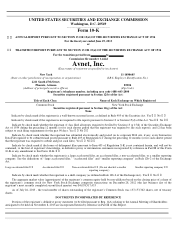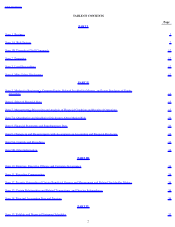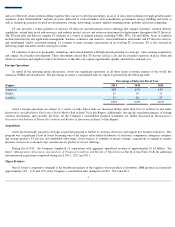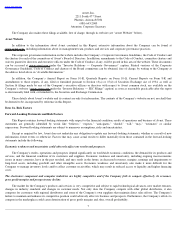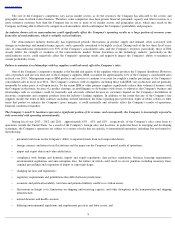Avnet 2013 Annual Report Download - page 12
Download and view the complete annual report
Please find page 12 of the 2013 Avnet annual report below. You can navigate through the pages in the report by either clicking on the pages listed below, or by using the keyword search tool below to find specific information within the annual report.
Table of Contents
it is the policy of many of the Company's suppliers to offer distributors like Avnet certain protections from the loss in value of inventory (such as
price protection and limited rights of return), the Company cannot be assured that such policies will fully compensate for the loss in value, or
that the vendors will choose to, or be able to, honor such agreements, some of which are not documented and, therefore, subject to the discretion
of the vendor. In addition, the majority of the Company's sales are typically made pursuant to individual purchase orders, and the Company
generally does not have long-
term supply arrangements with its customers. Generally, the Company's customers may cancel orders 30 days prior
to shipment with minimal penalties. The Company cannot be assured that unforeseen new product developments, declines in the value of the
Company's inventory or unforeseen order cancellations by its customers will not materially and adversely affect the Company's business, results
of operations, financial condition or liquidity.
Substantial defaults by the Company's customers on its accounts receivable or the loss of significant customers could have a significant
negative impact on the Company's business, results of operations, financial condition or liquidity.
A significant portion of the Company's working capital consists of accounts receivable from customers. If customers responsible for a
significant amount of accounts receivable were to become insolvent or otherwise unable to pay the amount they owe the Company, or were to
become unwilling or unable to make such payments in a timely manner, the Company's business, results of operations, financial condition or
liquidity could be adversely affected. An economic or industry downturn could adversely and materially affect the servicing of these accounts
receivable, which could result in longer payment cycles, increased collection costs and defaults in excess of management's expectations. A
significant deterioration in the Company's ability to collect on accounts receivable could also impact the cost or availability of financing under
its accounts receivable securitization program (see Financing Transactions appearing in Item 7 of this Report).
The Company may not have adequate or cost-effective liquidity or capital resources.
The Company's ability to satisfy its cash needs depends on its ability to generate cash from operations and to access the financial markets,
both of which are subject to general economic, financial, competitive, legislative, regulatory and other factors that are beyond the Company's
control.
The Company may need to satisfy its cash needs through external financing. However, external financing may not be available on
acceptable terms or at all. As of June 29, 2013 , Avnet had total debt outstanding of approximately $2.05 billion
under various notes and
committed and uncommitted lines of credit with financial institutions. The Company needs cash to make interest payments on, and to refinance,
this indebtedness and for general corporate purposes, such as funding its ongoing working capital and capital expenditure needs. Under the terms
of any external financing, the Company may incur higher than expected financing expenses and become subject to additional restrictions and
covenants. Any material increase in the Company's financing costs could have a material adverse effect on its profitability.
Under certain of its credit facilities, the Company is required to maintain certain specified financial ratios and meet certain tests. If the
Company fails to meet these financial ratios and/or tests, it may be unable to continue to utilize these facilities. If the Company is unable to
utilize these facilities, it may not have sufficient cash available to make interest payments on and refinance indebtedness and for general
corporate needs. General economic or business conditions, domestic and foreign, may be less favorable than management expects and could
adversely impact the Company's sales or its ability to collect receivables from its customers, which may impact access to the Company's
securitization program.
The agreements governing some of the Company's financings contain various covenants
and restrictions that limit the discretion of
management in operating its business and could prevent us from engaging in some activities that may be beneficial to the
Company's
business.
The agreements governing the Company's financing, including its credit facility and the indentures governing the Company's outstanding
notes, contain various covenants and restrictions that, in certain circumstances, limit the Company's ability, and the ability of certain subsidiaries,
to:
10
•
grant liens on assets;
•
make restricted payments (including paying dividends on capital stock or redeeming or repurchasing capital stock);
•
make investments;
• merge, consolidate or transfer all or substantially all of the Company’
s assets;
•
incur additional debt; or


